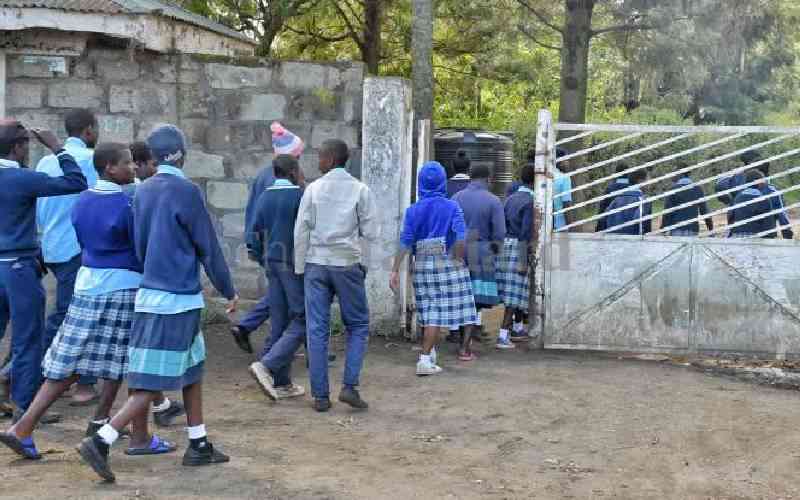It behooves the Ministry of Education to move swiftly to clarify the finer details of the implementation of the new curriculum, particularly on the junior secondary school placement. The 2-6-3-3-3 education system requires that learners spend two years in pre-primary education, six years in primary schools, three in junior secondary school and another three in senior secondary school.
As it stands, it is not clear yet whether the junior school will be domesticated in primary schools, in secondary schools or in separate institutions constructed for that level of education. The gap created by lack of clarity has stalled planning and investment decisions that are necessary for the smooth rollout of the new education system.
The immediate declaration of the place of the junior school will help the ministry in adequately planning for infrastructure needs. MPs have already indicated they need to know the place of the junior schools for them to make prudent decisions on infrastructure investment using the constituency development funds.
Reports indicate that 8,000 primary schools across the country have extra classrooms, which could be utilised for the junior level education. In addition to these, some county and extra-county schools are also reported to have under-enrolled students, leaving space for additional use.
Proposals have already been made to the ministry to consider a hybrid system where some extra county schools could hold classes for junior school while the rest could be domesticated in county schools. But these decisions need stakeholders’ engagement lest the ministry be accused of unilateral decisions and lack of stakeholder engagements in the critical process.
Unions and teachers’ associations are already pulling in different directions. They–together with other stakeholders–need to be sensitised and involved in the planning process as this can potentially draw unnecessary delays in the roll out of the new curriculum.
The ministry must therefore move carefully and swiftly to institute necessary consultative measures to clarify where the junior school should be domesticated for ease of investment decision-making.
Once clarified, the Teachers Service Commission will know the staffing needs for the level of education. The employer will plan effectively to avert a potential crisis because this also has financial implication.
Proposals have already been made that the junior level of education should have principals to manage the institutions.
Whether additional teachers need to be recruited or the TSC should rationalise the existing high school teachers to cover the gap are decisions that must be made ahead of time.
 The Standard Group Plc is a
multi-media organization with investments in media platforms spanning newspaper
print operations, television, radio broadcasting, digital and online services. The
Standard Group is recognized as a leading multi-media house in Kenya with a key
influence in matters of national and international interest.
The Standard Group Plc is a
multi-media organization with investments in media platforms spanning newspaper
print operations, television, radio broadcasting, digital and online services. The
Standard Group is recognized as a leading multi-media house in Kenya with a key
influence in matters of national and international interest.
 The Standard Group Plc is a
multi-media organization with investments in media platforms spanning newspaper
print operations, television, radio broadcasting, digital and online services. The
Standard Group is recognized as a leading multi-media house in Kenya with a key
influence in matters of national and international interest.
The Standard Group Plc is a
multi-media organization with investments in media platforms spanning newspaper
print operations, television, radio broadcasting, digital and online services. The
Standard Group is recognized as a leading multi-media house in Kenya with a key
influence in matters of national and international interest.








